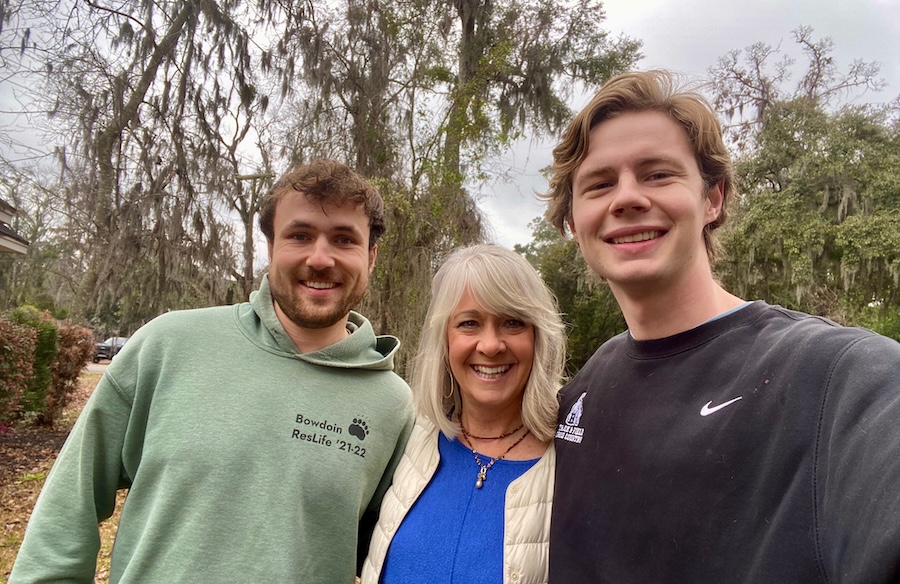Sex Talk: Invited Scholars Assess Impact of Alfred Kinsey 1916
By Tom Porter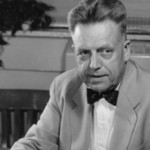
The link between the work of renowned sexologist and man of science Alfred Charles Kinsey, Class of 1916, and the raft of lurid and salacious literature that appeared in postwar America, may not be immediately obvious, said Whitney Strub, but there is one. Strub is associate professor and director of women’s and gender studies at Rutgers University.
“Kinsey’s work had a dramatic impact in setting the scene for this boost in lurid fiction,” he said, “because it legitimized social discussion of sexuality.” Until the advent of hardcore pornographic movies in the 1970s, this type of pulp fiction, books with names like Our Flesh Was Cheap, and Return to Lesbos, sold hundreds of thousands of copies, said Strub, satisfying a demand for both gay and straight literature.
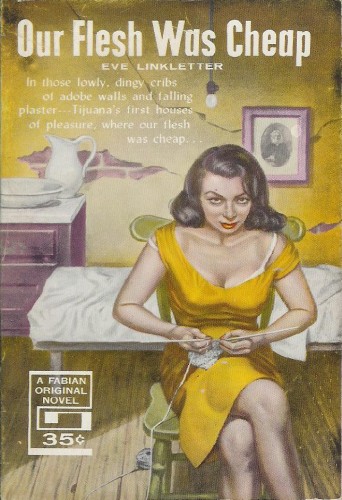
Strub was among the academics invited to speak at a two-day symposium in early May to discuss the legacy of Alfred Kinsey’s research on the centennial of his graduation from Bowdoin, where he majored in biology and psychology. Kinsey went on to author two ground-breaking studies into human sexuality: Sexual Behavior in the Human Male in 1948 and five years later, Sexual Behavior in the Human Female.
Strub was taking part in a panel discussion called “Kinsey and the Politics of Sexuality.” His lecture, which talked about the role that this boom in sexual fiction played in postwar gay activism, was titled “Tales from the Kinsey Scale,” a reference to the zero-to-six scale devised by Kinsey which is meant to illustrate an individual’s sexuality: zero meaning a person is completely heterosexual and six indicating they’re 100 percent homosexual. Kinsey’s research showed the majority of people to be somewhere in between zero and six, which was considered revolutionary at the time because it ran counter to the idea of a fixed sexual identity and implied that most people, whether they consider themselves heterosexual or homosexual, had some tendencies in the other direction.
The research methodology used by Kinsey and subsequent researchers were the focus of the panel’s other speaker, Michael Pettit, associate professor of history and theory of psychology at York University in Toronto. “Social researchers were very interested in sexuality but weren’t sure how to secure reliable, trustworthy interviews,” he said. For the information he was seeking, Kinsey did not think it a reliable technique to randomly select members of the population, which had become the default method for conducting most surveys, said Pettit.
“Kinsey instead developed a technique known as the ‘snowball’ technique,” said Pettit, “where he cultivated personal relationships with people and conducted long and intensive interviews.” Then he would encourage them to approach friends and colleagues also to take part. Pettit said Kinsey’s methods generated a lot of controversy over whether the people he was sampling were good representatives of the population at large: “There was a worry that people who would volunteer to give their sexual history may not have a typical sexual history.”
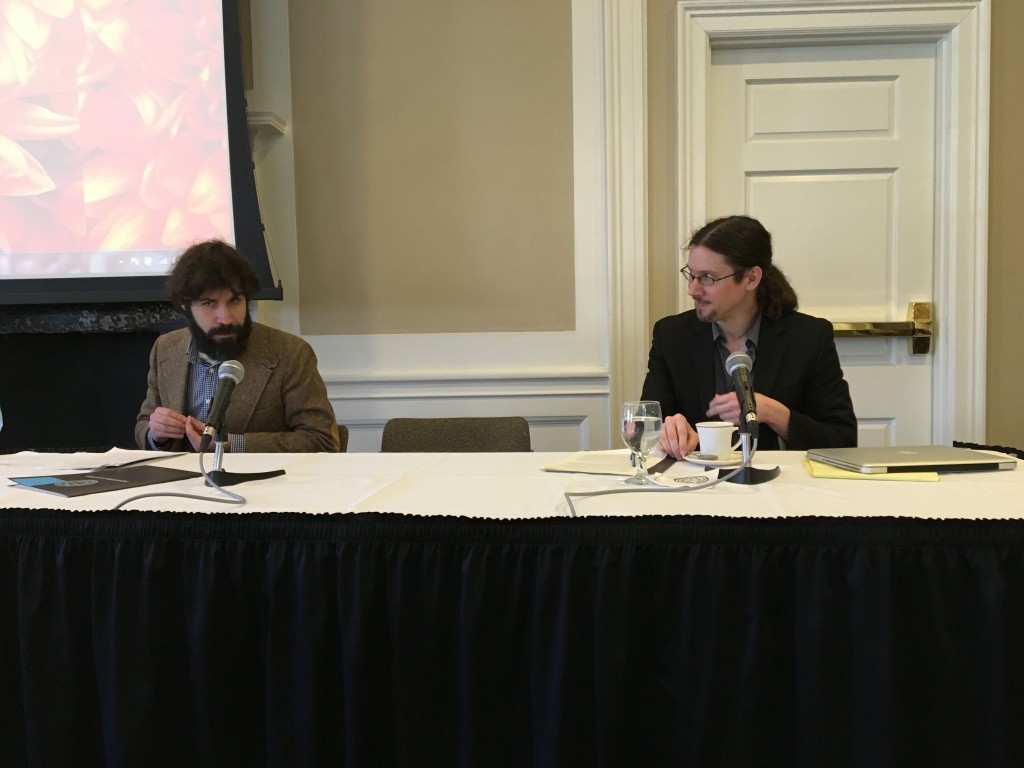
Kinsey’s last study came out in 1953, said Pettit, and for many years after that the issue of sex was either avoided altogether in social surveys or dealt with inadequately. “It wasn’t really until the 1990s that more detailed surveys on sexual behaviors and attitudes started to be conducted,” said Pettit. “So there’s a real knowledge gap in the data about sexual attitudes, and that’s what my paper tried to address.” Even today, said Pettit, although there are more data out there, the knowledge gap still exists to some extent. The issue of what people think about sex, and how they behave, he said, “is still a very vexed question for social researchers.”
The panel discussion was moderated by David Hecht, assistant professor of history at Bowdoin, for whom 20th-century American history is a speciality. “These two papers,” he said, “were very different in some respects: one talking about very popular, almost low brow literature, and the other tackling the somewhat drier but equally fascinating subject of research methods.”
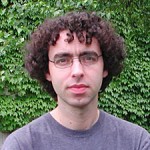
But, he added, they both, in different ways, addressed broader questions about US political culture in the second half of the last century. “And of course,” he added, “Kinsey’s contribution is central to both topics, whether it’s as a statistical researcher or as someone who made conversations about sex easier to have.”
The Kinsey symposium took about 18 months to put together and was organized by three Bowdoin faculty members, including Hecht. Also involved was Harrison King McCann Professor of English Marilyn Reizbaum, director of Bowdoin’s Gay and Lesbian Studies Program, and Associate Professor of German Jill Suzanne Smith, who came up with the idea. Smith’s teaching areas include German intellectual history, gender and sexuality studies. “I got my doctorate at the University of Indiana in Bloomington,” she said, “which is where Kinsey founded the Institute for Sex Research in 1947 and where I did the bulk of my research.” Kinsey had a wealth of German language archive material at his fingertips when he was doing his work in Indiana, said Smith: “German-speaking Europe led the way in the study of sexual science, beginning in the late 19th century, and thriving in the 1920s under a sexologist called Magnus Hirschfeld.”
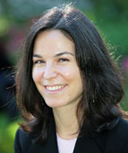
Due to the exodus of intellectuals after Hitler came to power, Smith said much of the research done by sexologists in Europe made its way to the US, where Kinsey took up the mantle. “But,” she added, “Kinsey broke with his European counterparts over their attitude to Freud, insisting that psychology has no place in the study of sexuality.” Smith said Kinsey also debunked Freud’s theory regarding the vaginal orgasm – a theory which many say is based on the assumption that women are inferior to men.
“When I came to Bowdoin in 2006,” said Smith, “I introduced myself to faculty by saying how I was following Kinsey’s footsteps in reverse, from Indiana to Bowdoin.” At that time though, she said, Kinsey and his connection to Bowdoin, were almost completely unknown here. “I hope this symposium has done a lot to address that, and let people know about one of the College’s most notable, if somewhat controversial, alumni.”
